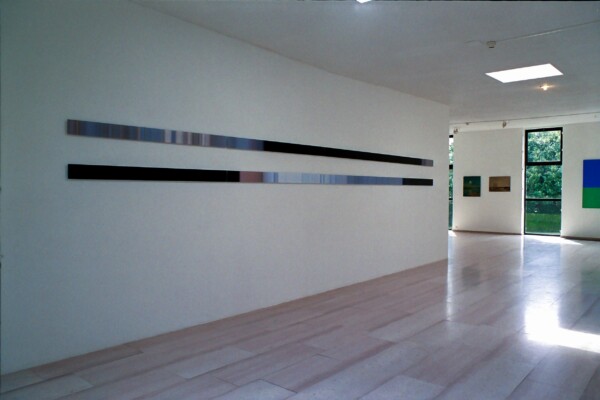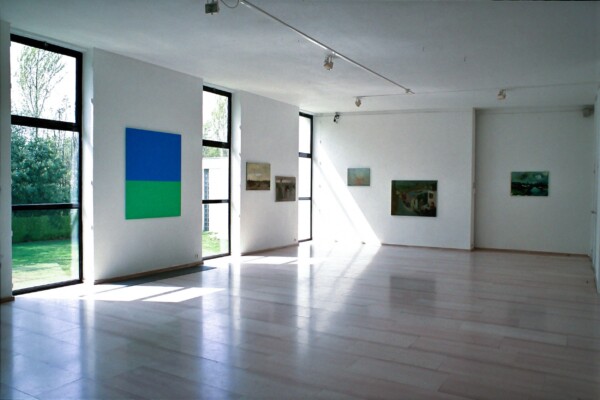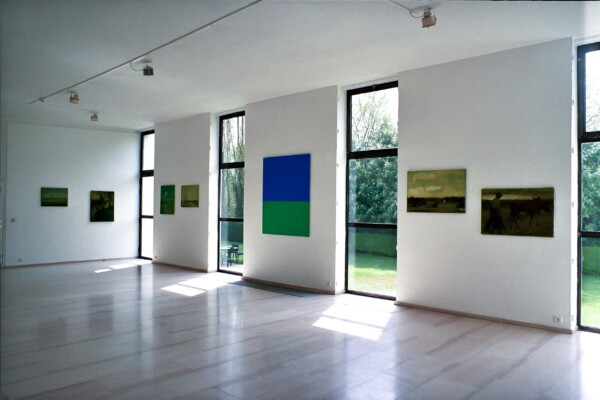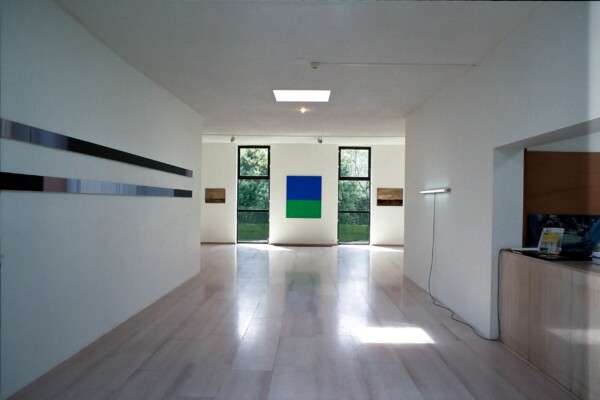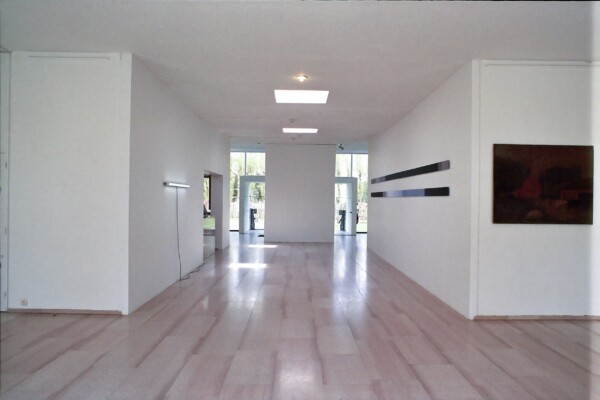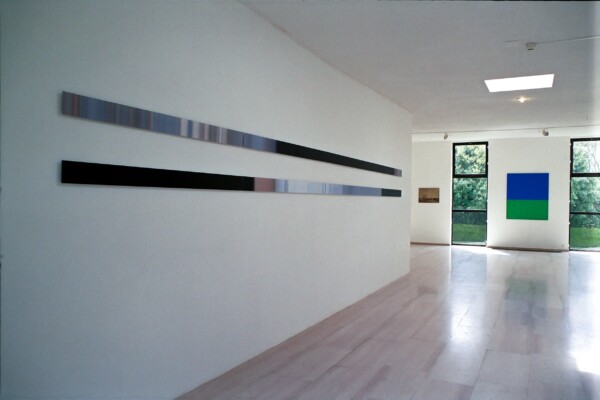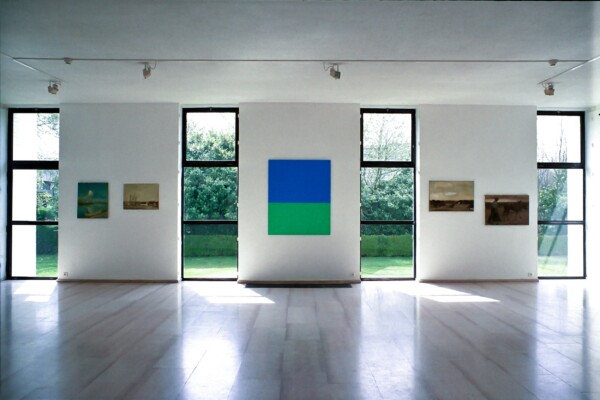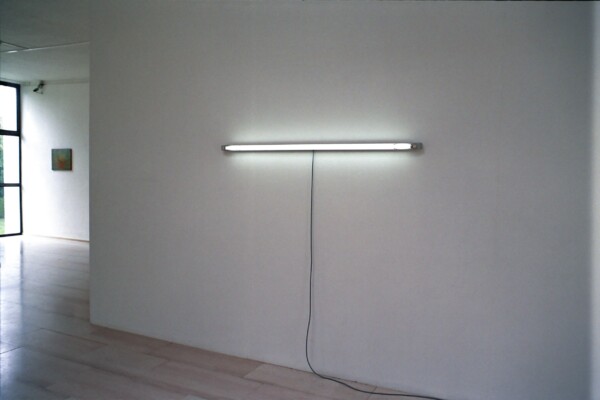Picture this: Stijn Cole
For Picture this, Stijn Cole developed an exhibition project linked to a small collection presentation. The perception of light and color constitutes the essential components of his work. Hence, the landscape also plays a fundamental role in his oeuvre. However, the use of color holds more than an aesthetic or symbolic value; it shapes and gives substance to his worldview.
The visual language employed by Stijn Cole shows a great affinity with American Minimal Art from the 1960s and 1970s. References to Donald Judd, Dan Flavin, Sol LeWitt, or Barnett Newman are quickly made. With a generous respect for that art historical tradition, he explores the artistic possibilities of their visual language in his way without falling into epigonism or ironic interpretations.
The same respect prevails in the presentation of his selection of landscapes from the MDD collection. The horizon line of each landscape was hung at his eye level (158cm), allowing the paintings to be experienced in a new and perhaps more accurate way. One of his sublime landscapes hangs centrally. It is reduced to its essence: the horizon line, a bright green (green key), and a bright blue (blue key) strip. The green key and blue key are used as backgrounds in film and TV industry shots. The artificial color patches are later filled in with a landscape. Seen in this way, Stijn Cole’s work becomes a substitute for any imaginary landscape.
A fluorescent tube lamp is prominently placed in the presentation. A sensor outside determines the light intensity of the lamp. The brightness of the lamp is directly proportional to the brightness outside. Thus, the lamp becomes fundamentally useless because when it is dark outside, the lamp naturally does not emit light anymore. The registration of nature (effects) via technical channels also forms the basis of his time strips. For this, he uses light and the resulting color tones. They are photographic observations of the color of the sky during certain periods. The richness of color shades of the sky is scientifically mapped out. Once placed in an interior, they seem to have lost their connection with the exterior and function as abstract color compositions.
Throughout the centuries, artists have always tried to represent light and the resulting color nuances in their work, which could never go beyond a snapshot. However, Stijn Cole succeeds in visually capturing the passing of time with his light strips, as an antidote to the transience of our existence.

